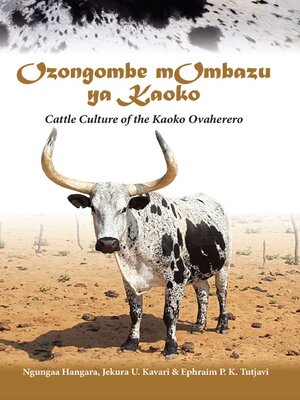
Sign up to save your library
With an OverDrive account, you can save your favorite libraries for at-a-glance information about availability. Find out more about OverDrive accounts.
Find this title in Libby, the library reading app by OverDrive.



Search for a digital library with this title
Title found at these libraries:
| Library Name | Distance |
|---|---|
| Loading... |
Ozongombe mOmbazu ya Kaoko/Cattle Culture of the Kaoko Ovaherero honours indigenous Sanga/Nguni cattle and their cultural and agricultural significance to the Ovaherero and increasingly to other cattle-breeders. The book introduces Otjiherero vernacular names for a wide variety of hide colours and patterns, horn shapes and ear notches in cattle, illustrated with over 300 colour photographs and drawings which give it the practical value of a bilingual field guide.
In depth information on the role of cattle in Ovaherero history and society, way of life, rites of passage, omens, taboos, worship, battle, and techniques of husbandry will interest students of agriculture, veterinary science and anthropology. The book also documents cultural concepts and practices inaccessible to the layperson and many urbanized Ovaherero, but which are still current among cattle-keepers in the isolated region of Kaokoland. This timely record preserves not only cultural information but language terms which otherwise could be lost within the coming generation.
Even a brief glance through its pages will serve to show the wonderful richness of Ovaherero cattle culture.







